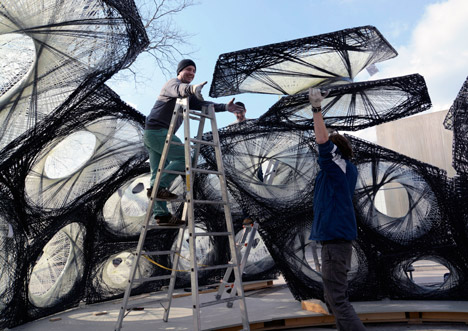V&A To Open Bug-Inspired Garden Pavilion for Engineering Season
By Something Curated
In just 2 weeks time, the Victoria & Albert museum will open the Elytra Filament Pavilion, a commissioned Garden installation that features a brand new architecture technique developed by the Institute for Computational Design at the University of Stuttgart in 2014. The opening will kick off the 2016 Engineering Season at the V&A.
In early 2014, innovators from University of Stuttgart stirred the architecture and design world by producing a porous woven pavilion that was a breakthrough in robotics and biomimicry alike. A multi-disciplinary team of architects, biologists, paleontologists, and engineers analyzed organic structures produced by bugs and realized their findings through ‘Research Pavilion,’ a structure which paired nature’s geometry with cutting-edge materials and technologies to create a new type of architecture that will be used for years to come.

Modeled on the intricate patterns of spiderwebs and the composition of beetle shells, this new breed of pavilions boasts super-light, super-stretchy materials made from low-cost, sustainable materials and is constructed piecemeal through an elaborate weaving process completed entirely by robots. Each is assembled on site takes approximately 18 months to construct.

Similar to the Research Pavilion that the team engineered back in 2014, the V&A’s Elytra Filament Pavilion is constructed from reinforced polymers and resin-stuffed fibres which makes the pavilion lightweight, super-strong and extremely elastic. It was designed by the same team of Stuttgart’s best: the architects Achim Menges and Moritz Dostelmann, plus engineers Jan Kippers and Thomas Auer. The “cells” were constructed in labs at Stuttgart and the pavilion itself is currently undergoing assembly. It will open in exactly two weeks on May 18.

